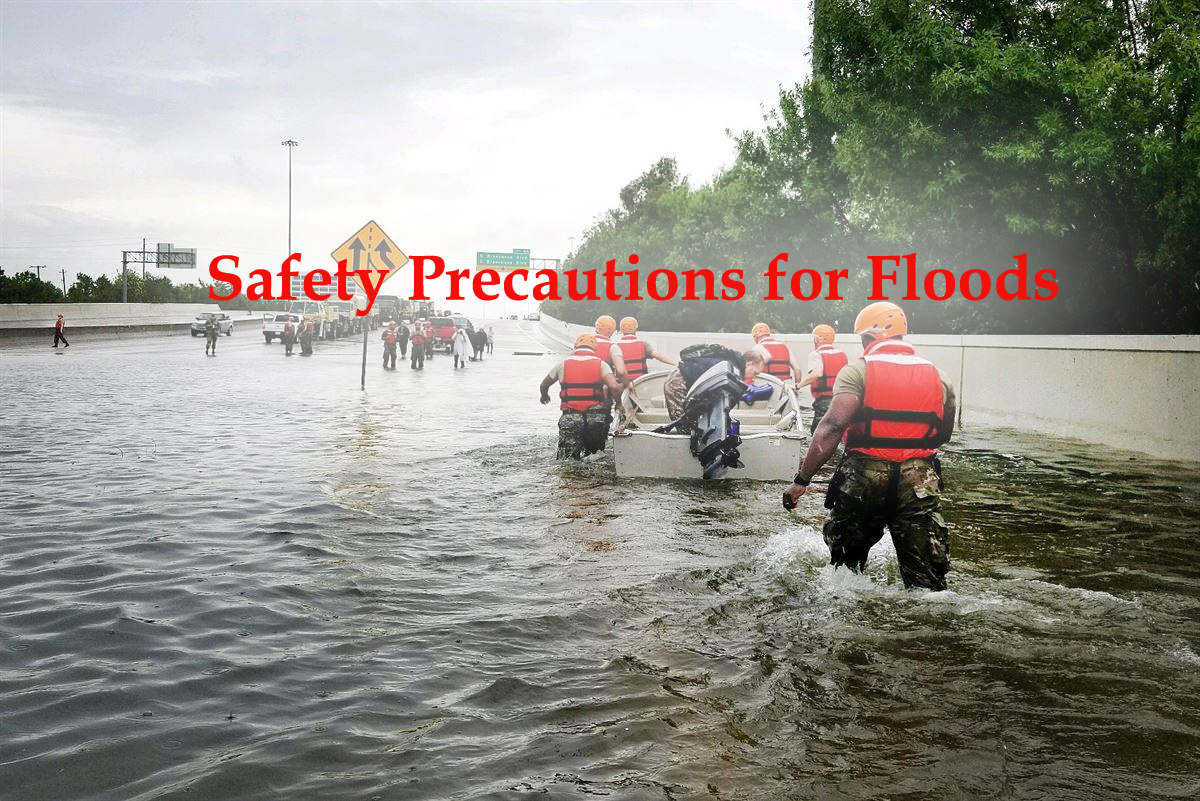Staying Safe During Flash Floods: Understanding Flood Alerts And Emergency Procedures

Table of Contents
Understanding Flash Flood Alerts and Warnings
Knowing the difference between various alerts and where to find them is paramount to staying safe during flash flood events. Prompt action based on accurate information can mean the difference between life and death.
Different Types of Alerts
Meteorological agencies use specific terminology to communicate the threat of flash floods. Understanding these distinctions is critical:
-
Watch: A flash flood watch means conditions are favorable for flash flooding to develop. This isn't a cause for immediate panic, but it's a strong signal to monitor weather updates closely, prepare your emergency kit, and review your evacuation plan. Be ready to act quickly if conditions worsen.
-
Warning: A flash flood warning indicates that flash flooding is imminent or already occurring in your area. This is a serious alert demanding immediate action. You must evacuate if you are in a flood-prone area. Delaying action can be life-threatening.
-
Advisory: A flash flood advisory suggests that minor flooding is possible. While the threat is less severe than a warning, you should still exercise caution and monitor conditions. Be aware of potential hazards and avoid unnecessary travel in affected areas.
Multiple Alert Sources
Relying on a single source for flash flood alerts is risky. Diversifying your information sources ensures you receive timely warnings, even if one source is unavailable.
-
Weather Apps: Many reliable weather apps (e.g., WeatherBug, AccuWeather, The Weather Channel) provide real-time alerts, including flash flood warnings, directly to your smartphone. Ensure your location settings are accurate.
-
NOAA Weather Radio: The National Oceanic and Atmospheric Administration (NOAA) Weather Radio provides 24/7 broadcasts of weather information, including flash flood warnings. Consider purchasing a NOAA Weather Radio with specific alerts for your area.
-
Local News: Television and radio stations often broadcast urgent weather alerts, including flash flood warnings, for your specific region. Keep your radio tuned to a local news station, especially during periods of severe weather.
-
Wireless Emergency Alerts (WEA): Your cell phone can receive emergency alerts issued by the National Weather Service. Ensure you have WEA enabled on your device. This provides immediate alerts even if you are not actively monitoring weather reports.
It's crucial to utilize multiple alert sources for redundancy and to ensure you receive warnings from different channels.
Interpreting Flood Maps and Forecasts
Understanding flood risk maps and forecasts helps you assess your personal level of risk. This knowledge allows for better preparedness and informed decision-making.
-
Finding Local Flood Risk Maps: Your local government's website (often the emergency management or public works department) will have flood risk maps for your area. The Federal Emergency Management Agency (FEMA) also provides nationwide flood maps.
-
Understanding Map Symbols: Flood maps utilize various symbols to denote flood zones, elevation levels, and potential flood depths. Familiarize yourself with these symbols before a flash flood event.
-
Flood Zones and Risk Levels: Understanding your location's flood zone classification (e.g., high-risk, moderate-risk) is essential for assessing your vulnerability. This knowledge informs your preparedness strategies and evacuation plans.
Emergency Procedures During a Flash Flood
Proactive planning and prompt action are critical during a flash flood. Having a plan in place before a flood event significantly increases your chances of survival.
Evacuation Planning
A well-defined evacuation plan is crucial for a swift and safe escape during a flash flood.
-
Multiple Evacuation Routes: Identify at least two different escape routes from your home or workplace. One route may become impassable due to flooding.
-
Designated Meeting Place: Establish a meeting point outside the flood-prone area where your family can reunite after evacuating.
-
Emergency Kit: Prepare a waterproof emergency kit containing essential supplies like water, non-perishable food, medications, important documents (identification, insurance), a first-aid kit, flashlights, and extra batteries.
Immediate Actions During a Flash Flood
When a flash flood warning is issued, immediate action is critical:
-
Move to Higher Ground Immediately: This is the most important step. Do not wait for the water to rise around you; evacuate immediately to higher ground.
-
Avoid Driving Through Flooded Areas: Even shallow water can sweep away a car. "Turn around, don't drown!" is a critical safety message. Never attempt to drive through flooded roads.
-
Never Walk or Drive Through Flowing Water: The force of flowing water is deceptively strong and can easily knock you off your feet.
-
Seek Shelter: If evacuation is impossible, seek shelter in a sturdy building on higher ground. Stay away from windows.
Post-Flood Safety
Even after the floodwaters recede, dangers persist:
-
Beware of Downed Power Lines: Never approach or touch downed power lines. Report them to the local authorities immediately.
-
Avoid Floodwaters: Floodwaters are often contaminated with sewage and other hazardous materials. Avoid contact to prevent illness.
-
Report Damage: Contact local authorities to report any damage to your property or infrastructure.
-
Check on Neighbors: After the flood, check on your neighbors and family members to ensure their safety and well-being.
Conclusion
Staying safe during flash floods depends on understanding flash flood alerts, having a comprehensive evacuation plan, and taking immediate action when a warning is issued. Heeding these warnings and prioritizing safety is paramount. Remember, flash floods can develop rapidly, leaving little time for reaction. Don't wait for a flash flood warning; prepare now! Develop your emergency plan today, and familiarize yourself with local flood alerts and warnings. Remember, your safety is paramount.

Featured Posts
-
 Louisiana Inmate Escape Attempt The Role Of Hair Trimmers In A New Orleans Jailbreak
May 26, 2025
Louisiana Inmate Escape Attempt The Role Of Hair Trimmers In A New Orleans Jailbreak
May 26, 2025 -
 Monaco Auction To Feature Michael Schumachers Championship Ferrari
May 26, 2025
Monaco Auction To Feature Michael Schumachers Championship Ferrari
May 26, 2025 -
 F1 Driver Style The Ultimate Guide To This Seasons Trends
May 26, 2025
F1 Driver Style The Ultimate Guide To This Seasons Trends
May 26, 2025 -
 Understanding The Railway Station Man His Role And Responsibilities
May 26, 2025
Understanding The Railway Station Man His Role And Responsibilities
May 26, 2025 -
 Nikes Best Running Shoes Of 2025 A Comprehensive Overview
May 26, 2025
Nikes Best Running Shoes Of 2025 A Comprehensive Overview
May 26, 2025
